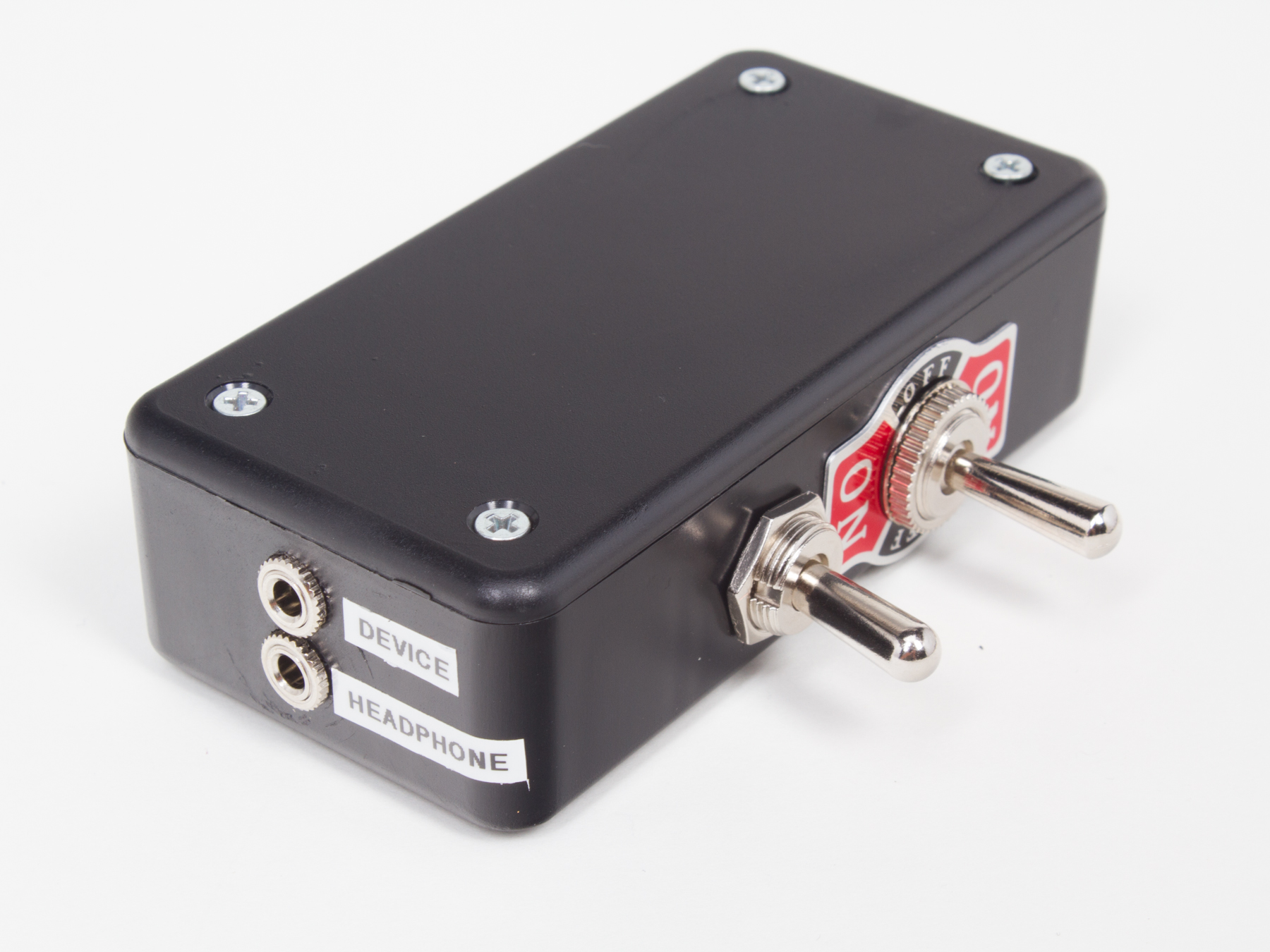As a musician I often need to learn new songs, and it can be difficult to hear individual instruments in recordings I want to study. I have often wished for an easy way to eliminate or reduce the vocals and isolate the instruments. Various hardware and software solutions exist but they tend to be expensive or inconvenient. I wanted a cheap method that I could use anywhere, on any device with a 1/8″ stereo headphone jack.
Then, one night, I was fiddling with a pair of headphones with a defective plug. When moved a certain way, it gave exactly the vocals-canceling effect I had been looking for!
To understand what was happening, I did some research online, bought some components at RadioShack, and tested various wiring combinations. My son Nathan and I tested the final device.
In my research, I discovered that many songs are mixed down with vocals equally on both channels (Right and Left). This is called “Down the Center” because it gives an illusion that the vocals are coming from “center stage.”
Now, when the ground (sleeve) on a tip-ring-shield (TRS) signal is disconnected, the hot wire from each signal (Left or Right) tries to use the opposing hot wire as its new ground. As a result, the signals are 180 degrees out of phase. Thus, anything that was mixed to both tracks gets cancelled out by destructive interference. When this happens in a recording, anything mixed evenly to both right and left channels will magically disappear.
Many recordings are well-suited to create this effect. Depending on how a song is mixed, the instrument isolation effects using this technique can be quite remarkable. The device can also be set to send full right or left signal to both headphones for added isolation effects.



















